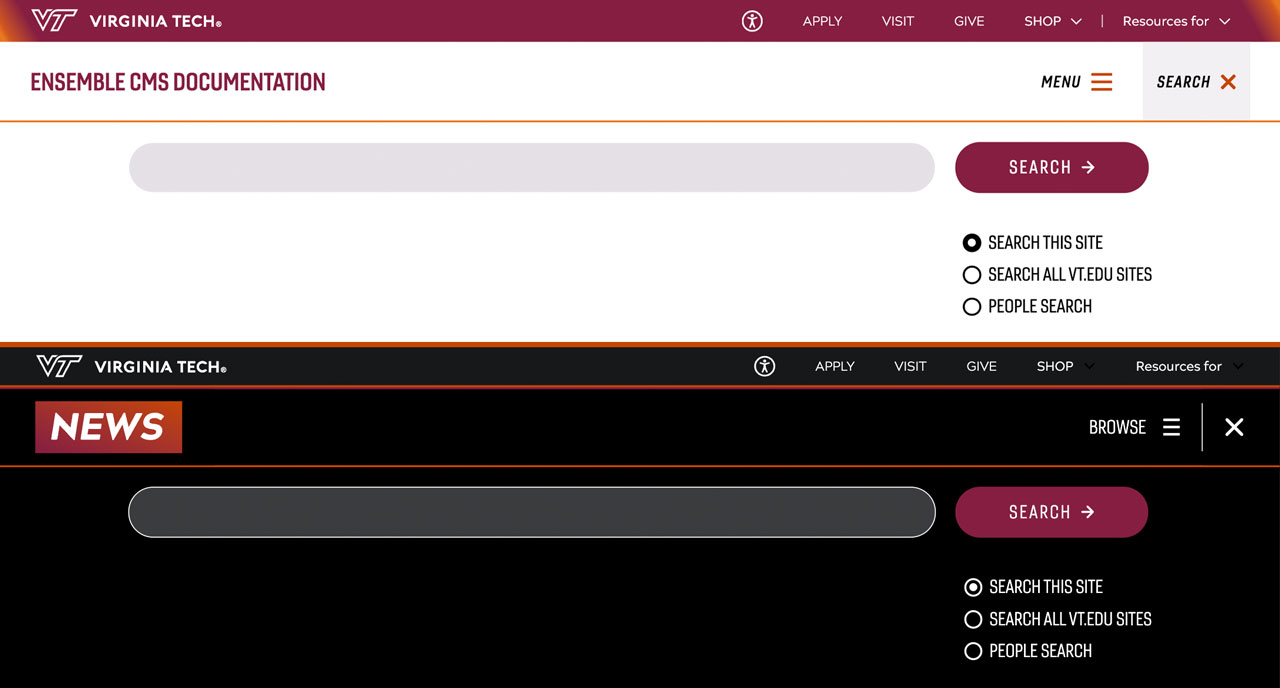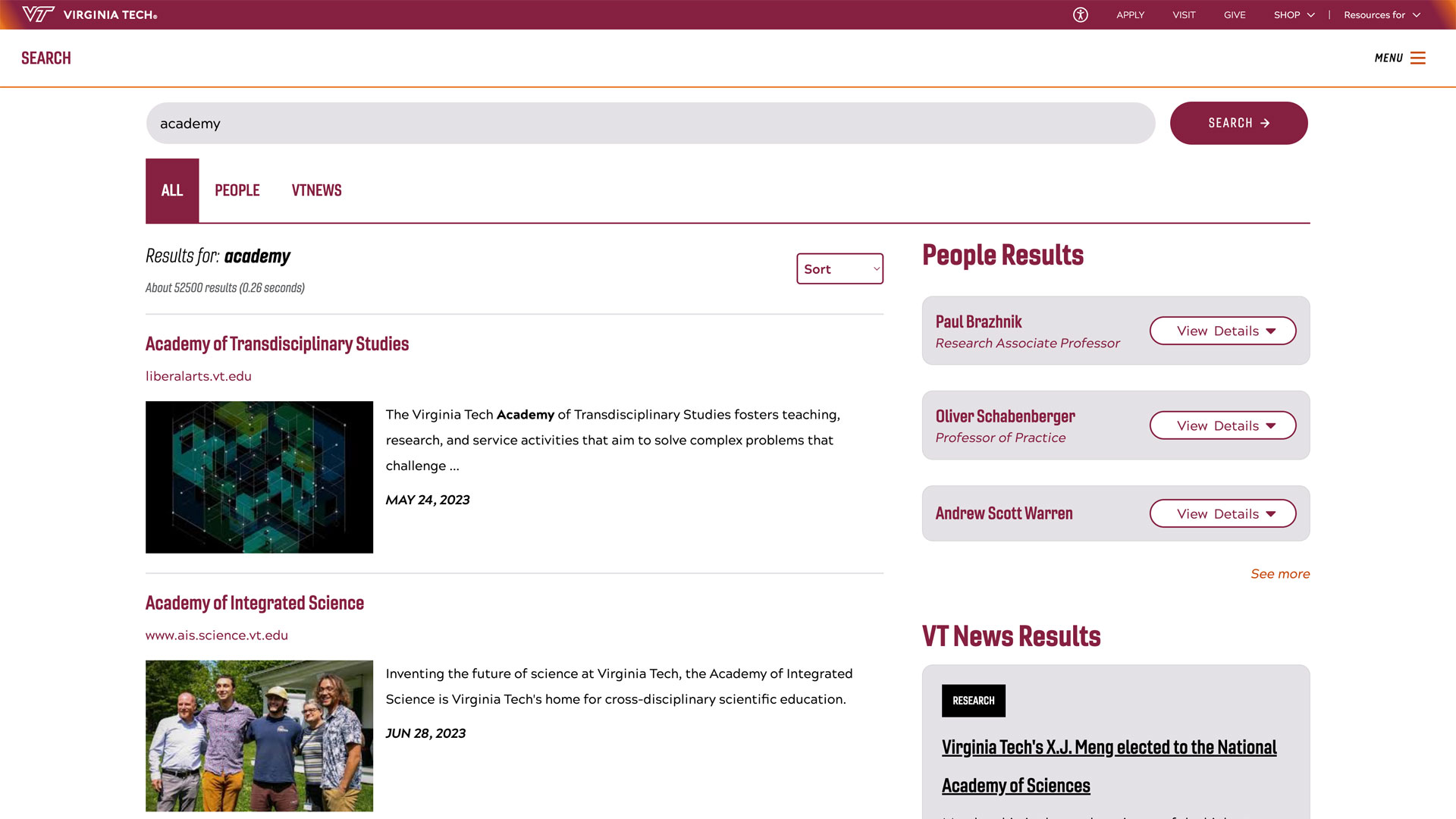Imported Dutch warmblood horse bounces back from severe neurologic disease with help of Virginia Tech equine veterinary center

Debbie Purvins describes Stanley, a 25-year-old Dutch warmblood gelding, as a “once in a lifetime horse.” With the help of diagnosis and treatment at the Marion duPont Scott Equine Medical Center, Stanley’s own lifetime continues with vigor.
Stanley began stumbling and showing signs of confusion late last fall — alarming behavior for a horse known for his elegance and precision.
Stanley was evaluated for suspected colic at his home farm by veterinarian Herb Yee, from Breton Equine Veterinary Services, in Leonardtown, Maryland. Yee noticed Stanley’s abnormal behavior and, concerned about observed neurologic deficits, referred him to the Equine Medical Center at Leesburg for further diagnostics and treatment.
The Equine Medical Center in Leesburg is one of three animal healthcare facilities of the Virginia-Maryland College of Veterinary Medicine, based on the Virginia Tech campus in Blacksburg.
Stanley was found to have equine herpesvirus (EHV-1). EHV-1 is a highly contagious virus that can cause respiratory disease, abortion, neonatal infections, and neurologic disease. The neurologic form, equine herpes myeloencephalopathy, is a result of damage to the blood vessels in the spinal cord and brain.
“I’m very thankful to the care given to Stanley at the EMC and want everyone to know that Stanley has made a full recovery despite his age and is back at work teaching me how to ride,” said Stanley’s owner, Debbie Purvins.
Purvins, from Bushwood, Maryland, first connected with Stanley in the fall of 2007 while searching for a suitable dressage horse.
Stanley was born in the Netherlands on February 24, 1999, and imported into the U.S. in 2005. He had been schooled in dressage prior to being shipped to the US, but when Purvins connected with him his dressage skills were very rusty.
Additionally, he had issues with taking contact, the steady connection between the rider's hand and the horse's mouth, but his foundational training was correct. Bit contact is essential in dressage, for good communication and balance, and to encourage harmonious movement. Over the last 15 years Stanley has been a great teacher but has always challenged Purvins with contact.
“When we are truly connected the feeling is awesome and riding him is effortless," Purvins said. “Fortunately, these moments are coming more frequently and last longer. I am truly blessed with having such a partnership with Stanley; a once in a lifetime horse.”
When Stanley arrived at the Leesburg center after becoming ill in November 2024, emergency and critical care clinician Emily Schaefer completed a full neurologic evaluation, which included an initial static exam to assess his cranial nerves, behavior and mentation, head and neck posture, neck flexions, and foot placement, followed a dynamic (in motion) exam.
Equine neurologic signs can vary in severity. Common neurologic signs include an uncoordinated walk, muscle weakness or twitching, inability to urinate and defecate, abnormal head and eye positions, and inability to stand.
Stanley’s neurologic exam revealed a dull mentation with several cranial nerve deficits. In addition, he had decreased range of motion of his neck, abnormal foot placement at the walk, and was very weak in the hind legs. He was also dribbling urine during his examination.
Initial bloodwork came back as normal with one anomaly — Stanley’s serum amyloid A (SAA) blood test came back high, indicating the presence of inflammation and/or infection. A nasal swab and blood to test for EHV-1 were collected for testing.
Cervical (neck) radiographs were completed to check for osteoarthritis or fractures that could cause neurologic symptoms. An endoscope — a flexible tube with a camera and light at the tip — was passed through Stanley’s nostril to evaluate his ability to swallow, and to check his guttural pouches for infection, and to check for temporohyoid osteoarthropathy (THO). The temporohyoid joint located at the base of the skull can be affected by arthritis resulting in neurological issues due to nerve compression.
Due to Stanley’s obvious neurologic deficits and while results of his nasal swab test were pending, he was started on a broad-spectrum treatment and supportive care. Stanley was admitted into the hospital, and for his comfort and safety, was placed in the EMC’s fully padded neurologic stall in the EMC biosecurity Level 2 Isolation Unit.
The following day, the results of the nasal swab confirmed that Stanley was positive for the Equine Herpesvirus (EHV-1) virus. Stanley’s care was passed to clinician Megan Marchitello, clinical instructor of equine medicine.
Over the next few days, Stanley had a good appetite and water intake and remained stable. His neurologic signs gradually improved. He regained the ability to urinate normally and was able to pass manure.
Stanley improved enough to be sent to a rehabilitation center, but he was still highly contagious. He was transported to Always There Horse Care, a 24-hour nursing, and rehabilitation center in Haymarket, Virginia, which has a suitable quarantine area to handle horses diagnosed with infectious disease. Stanley’s treatment continued under the care of licensed veterinary technician Malena Brisbois.
EMC clinician Elizabeth MacDonald, clinical instructor of equine medicine visited Stanley at the rehabilitation center to ensure that he was progressing well, and that any questions that Malena had regarding his ongoing care were answered.
Equine herpesvirus (EHV-1) spreads primarily through direct contact with infected horses via nasal secretions, aerosol transmission in shared airspace and indirect contact through contaminated water, feed, and equipment. Human contact can also be a factor in spreading the virus from horse to horse. Horses can also carry the virus in an inactive form and start shedding during times of stress. EHV-1 can cause respiratory disease, abortion, neonatal infections, and neurologic disease.
"Thanks to a prompt diagnosis, appropriate isolation, and supportive care, Stanley was given the best opportunity for a positive outcome,” said MacDonald.
At the beginning of January, once Stanley had completed his quarantine period, it was finally time for him to leave the rehabilitation center and return home.
Stanley’s recovery highlights how it takes a team of dedicated individuals with differing skill sets in full support of each other to successfully treat a life-threatening virus such as EHV-1.
“Horses do not always bounce back as quickly after a positive diagnosis for EHV-1,” Purvins said. “ It is incredibly rewarding to see Stanley recover so well and return home.”




